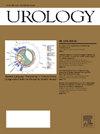Comprehensive Analysis of Mail-In Andrology Kits Compared to Traditional Clinic Collection
IF 2
3区 医学
Q2 UROLOGY & NEPHROLOGY
引用次数: 0
Abstract
Objective
To evaluate mail-in semen collection services for cryopreservation, focusing on costs, transparency, and efficacy due to the advancements of direct access to fertility testing and treatment.
Methods
Using Google, we identified eight prominent companies offering mail-in sperm cryopreservation services. We analyzed their costs, storage practices, marketing strategies, and prescription requirements. For comparison, we examined academic institutions offering similar services, exploring differences in pricing, processes, and accessibility.
Results
The average upfront cost to process and freeze sperm was $730 (range $329 to $1575) with 10-year storage costs of $3117, on average (range $1450 to $5500), which may or may not be guaranteed to remain level. Not all services disclosed future costs such as transport, thawing, and disposal fees, with some firms being less transparent. Two firms offered client depositor storage on-site and the remainder outsourced to partner labs scattered around the country. One facility offered storage of tissue samples for men with azoospermia; none of the companies required men to have an order from their doctor to use the service.
Conclusion
Mail-in cryopreservation services provide convenience but present challenges, including varying costs, transparency issues, and potential limitations in medical oversight. Integrating these services into traditional healthcare settings could optimize patient outcomes and satisfaction.
邮寄男科试剂盒与传统临床收集的综合分析。
目的:评估邮寄精子采集服务的低温保存,重点关注成本,透明度和有效性,因为直接获得生育检测和治疗的进步。方法:使用谷歌,我们确定了八家提供邮寄精子冷冻保存服务的知名公司。我们分析了它们的成本、储存方式、营销策略和处方要求。为了进行比较,我们考察了提供类似服务的学术机构,探讨了定价、流程和可及性方面的差异。结果:处理和冷冻精子的平均前期成本为730美元(范围为329美元至1575美元),10年存储成本平均为3117美元(范围为1450美元至5500美元),这可能保证也可能不保证保持水平。并非所有的服务都披露了未来的成本,如运输、解冻和处理费,一些公司的透明度较低。两家公司为客户提供现场存储服务,其余的外包给分布在全国各地的合作实验室。一个设施为无精子症患者提供组织样本的储存;没有一家公司要求男性必须有医生的处方才能使用这项服务。结论:邮寄冷冻保存服务提供了便利,但也存在挑战,包括不同的成本、透明度问题和医疗监管方面的潜在限制。将这些服务集成到传统医疗保健环境中可以优化患者的治疗效果和满意度。
本文章由计算机程序翻译,如有差异,请以英文原文为准。
求助全文
约1分钟内获得全文
求助全文
来源期刊

Urology
医学-泌尿学与肾脏学
CiteScore
3.30
自引率
9.50%
发文量
716
审稿时长
59 days
期刊介绍:
Urology is a monthly, peer–reviewed journal primarily for urologists, residents, interns, nephrologists, and other specialists interested in urology
The mission of Urology®, the "Gold Journal," is to provide practical, timely, and relevant clinical and basic science information to physicians and researchers practicing the art of urology worldwide. Urology® publishes original articles relating to adult and pediatric clinical urology as well as to clinical and basic science research. Topics in Urology® include pediatrics, surgical oncology, radiology, pathology, erectile dysfunction, infertility, incontinence, transplantation, endourology, andrology, female urology, reconstructive surgery, and medical oncology, as well as relevant basic science issues. Special features include rapid communication of important timely issues, surgeon''s workshops, interesting case reports, surgical techniques, clinical and basic science review articles, guest editorials, letters to the editor, book reviews, and historical articles in urology.
 求助内容:
求助内容: 应助结果提醒方式:
应助结果提醒方式:


